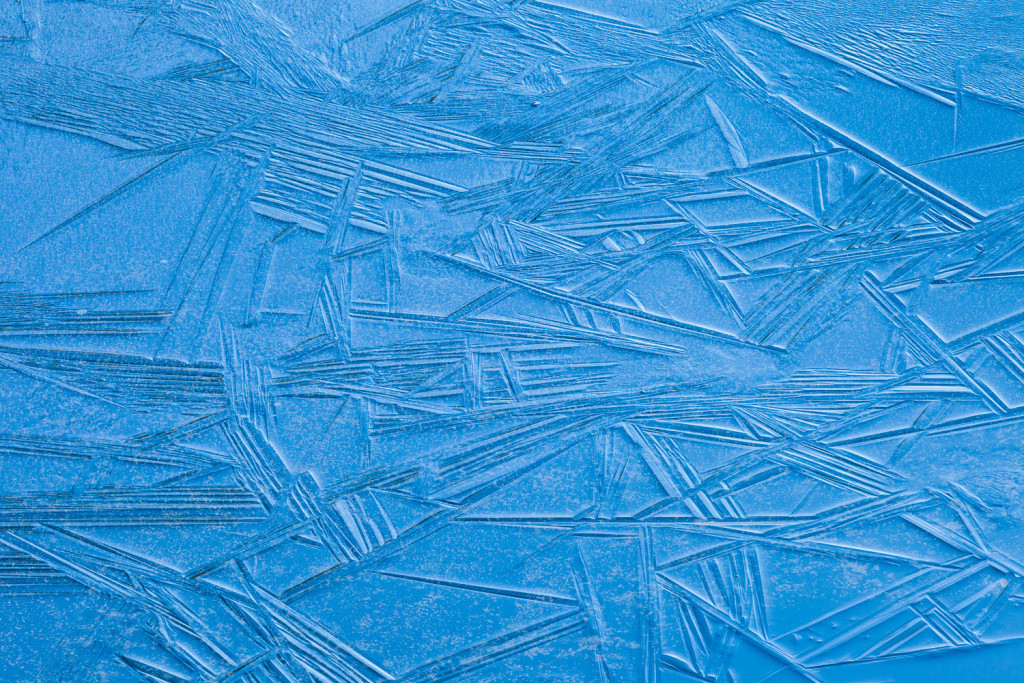
I shot the image above a few mornings ago at a state park about an hour and half away from my home. I arrived at the park before sunrise to find some waterfalls I was wanting to photograph. I found the waterfalls and spent nearly two hours photographing them with different compositions and different lenses. I had packed up my equipment to head home when I noticed the surface of the lake I was at had frozen and created patterns in the ice. Needless to say, I stopped and unpacked my camera to get pictures of these patterns.
The problem I faced as I stood on the edge of the lake was figuring out to get how complete sharpness throughout the whole frame. The most effective way would be to point my camera straight down at the designs so the plane of the camera and the plane of the ice were parallel. However, that was not an option in this case because the ice designs were six to eight feet in front of me on the surface of the lake. My only option was to use the smallest aperature I had on the lens I was using, which was in this case f/32 on a Canon 70-200mm lens, and hope for the best. This small aperture required a relatively long shutter speed of one-half second. Since my camera was mounted on a sturdy tripod and the subject was not moving, the shutter speed was not a concern.
Settings: Canon 5D Mk II, 200mm, 1/2 sec., f/32